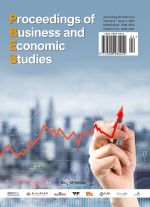Abstract
To address the recycling challenges posed by the global peak of wind turbine blade retirement, this study aims to establish a decision-making model for reverse logistics modes of decommissioned blades, resolving the multi-agent collaborative optimization problem under ultra-high logistics cost constraints. Based on the characteristics of centralized sourcing and determinable elements in blade reverse logistics, we developed three models dominated by wind power equipment manufacturers, operators, and third-party enterprises, respectively. The research analyzes influencing factors on reverse logistics mode selection and proposes a threshold decision mechanism for mode selection. Key findings reveal: technological strength serves as the core driver for manufacturer-dominated models; channel efficiency determines the applicability of operator-led models; insufficient economies of scale may hinder third-party model development. This study provides decision-making foundations for the resource utilization of decommissioned blades.
References
Barthelmie RJ, Pryor SC, 2014, Potential Contribution of Wind Energy to Climate Change Mitigation. Nature Climate Change, 4(8): 684–688. DOI:10.1038/nclimate2269.
Feng Y, Lin H, Ho SL, et al., 2015, Overview of Wind Power Generation in China: Status and Development. Renewable & Sustainable Energy Reviews, 50: 847–858. DOI:10.1016/j.rser.2015.05.005.
Xia Y, 2024, Overview of Wind Power Development and Utilization in Some Countries and Regions of the World in 2023. Wind Energy, 2024(2): 60–62. DOI:10.3969/j.issn.1674-9219.2024.02.012.
Teng Y, 2023, Wind Power Photovoltaic Equipment Ushered in the Tide of ‘Retirement’. Environmental Economy, 2023(17): 36–37.
Chen YY, Zhang X, Chen Y, et al., 2024, [Title not provided]. Chinese Journal of Environmental Engineering, 18(5): 1415.
Liu P, Meng F, Barlow CY, 2022, Wind Turbine Blade End-of-Life Options: An Economic Comparison. Resources, Conservation and Recycling, 180: 106202. DOI:10.1016/j.resconrec.2022.106202.
Nagle AJ, Mullally G, Leahy PG, et al., 2022, Life Cycle Assessment of the Use of Decommissioned Wind Blades in Second Life Applications. Journal of Environmental Management, 302: 113994.
Xiong X, Zhang Y, Zhang J, et al., 2024, Organic Solid Waste Experiment of Boiler Coupling Combustion of Decommissioned Wind Power Based on Settling Furnace. Chemical Progress, 43(z1): 555–563. DOI:10.16085/j.issn.1000-6613.2024-0998.
Liu Y, 2016, Research on Automobile Reverse Logistics. Enterprise Reform and Management, 2016(12): 180.
